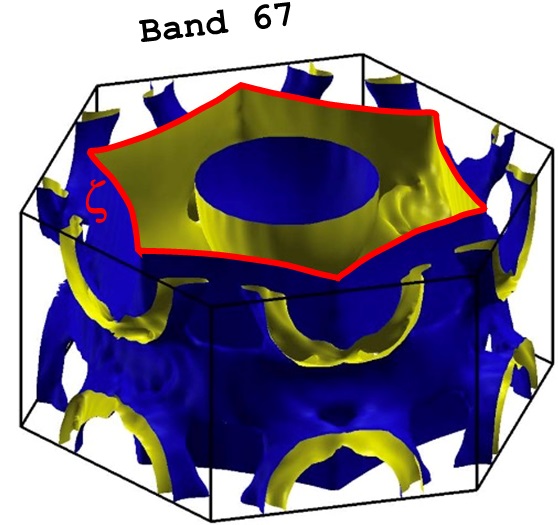Superconducting material enable to conduct the current without any resistance. To control the superconductivity needs to determine the electronic structure in details.
To this goal, a team from IRIG [collaboration] has been looking at a recently discovered family of materials: kagome superconductors (chemical formula AV3Sb5 with A = K, Rb or Cs). This name comes from the arrangement of vanadium atoms similar to the traditional weave of the japanese kagome basket (see
photo).
In order to obtain superconductivity in the material studied, CsV3Sb5 it has to be cooled to a very low temperature. However this operation carried out at atmospheric pressure makes another ordered state appears. To access the original state of this material the researchers subjected it to a hydrostatic pressure of 3 GPa. At very low temperature and by measuring the resistivity of the material as a function of an external magnetic field, they were able to determine the electronic structure of CsV3Sb5 in a state equivalent to its original state, but at a higher temperature.
For the first time, the large orbit of the electronic structure of the kagome superconductor CsV3Sb5 has been determined experimentally (figure). This characteristic shape coincides perfectly with theoretical calculations confirming that it is the original fundamental state of this material without any deformation. In addition, these studies will help to understand other instabilities present in the different quantum states of the material.

Figure: Structure of the electronic quantum states of the CsV3Sb5. The red line corresponds to the largest electronic orbit.

Photo : japanese kagome-like basket
Fundings
- Research Grants Council of Hong Kong
- The Chinese University of Hong Kong
- City University of Hong Kong
- FETTOM ANR project
Collaboration
- Department of Physics, The Chinese University of Hong Kong, China
- Shenzhen Research Institute, The Chinese University of Hong Kong
- Department of Physics, Southern University of Science and Technology, Shenzhen, Guangdong, China
- Laboratoire National des Champs Magnétiques Intenses, Grenoble, France